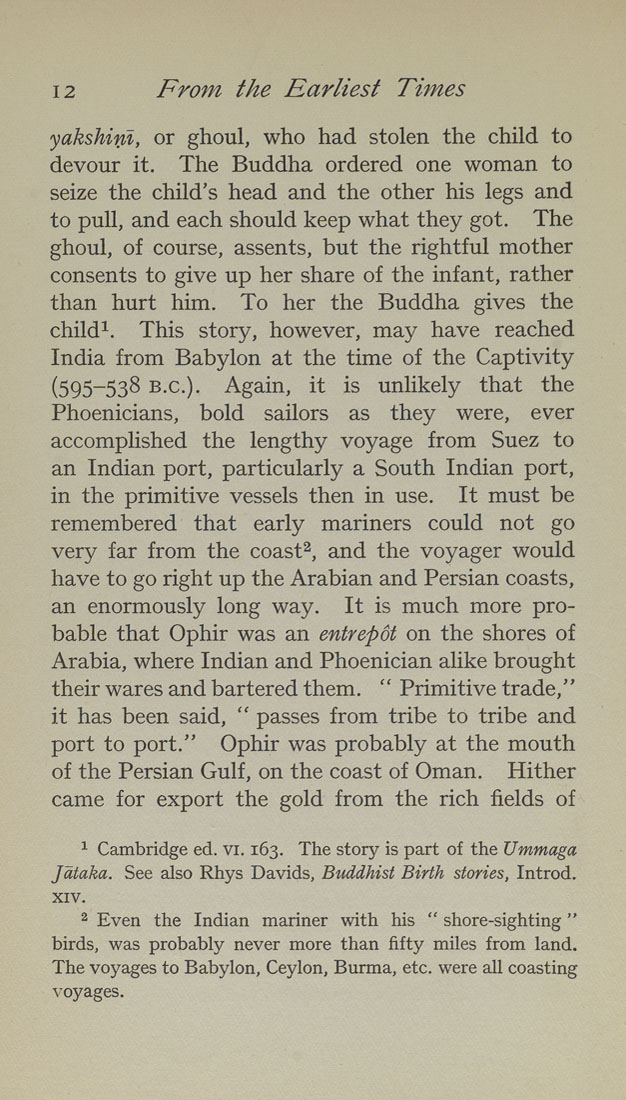12 From the Earliest Times
yakshim, or ghoul, who had stolen the child to
devour it. The Buddha ordered one woman to
seize the child's head and the other his legs and
to pull, and each should keep what they got. The
ghoul, of course, assents, but the rightful mother
consents to give up her share of the infant, rather
than hurt him. To her the Buddha gives the
child 1. This story, however, may have reached
India from Babylon at the time of the Captivity
(595-538 B.C.). Again, it is unlikely that the
Phoenicians, bold sailors as they were, ever
accomplished the lengthy voyage from Suez to
an Indian port, particularly a South Indian port,
in the primitive vessels then in use. It must be
remembered that early mariners could not go
very far from the coast^, and the voyager would
have to go right up the Arabian and Persian coasts,
an enormously long way. It is much more pro¬
bable that Ophir was an entrepot on the shores of
Arabia, where Indian and Phoenician alike brought
their wares and bartered them. '' Primitive trade,''
it has been said, '' passes from tribe to tribe and
port to port." Ophir was probably at the mouth
of the Persian Gulf, on the coast of Oman. Hither
came for export the gold from the rich fields of
^ Cambridge ed. vi. 163. The story is part of the Ummaga
Jdtaka. See also Rhys Davids, Buddhist Birth stories, Introd.
xiv.
^ Even the Indian mariner with his " shore-sighting "
birds, was probably never more than fifty miles from land.
The voyages to Babylon, Ceylon, Burma, etc. were all coasting
voyages.
|








